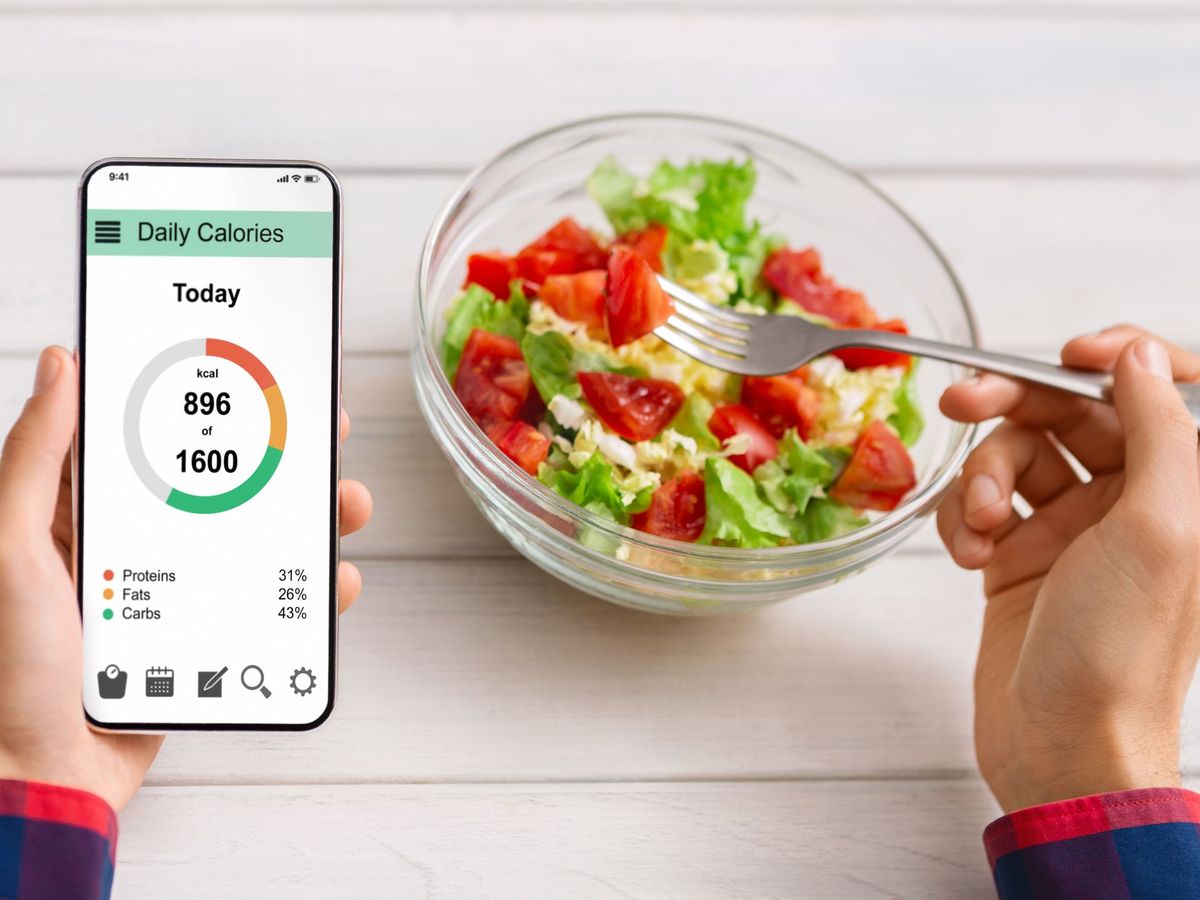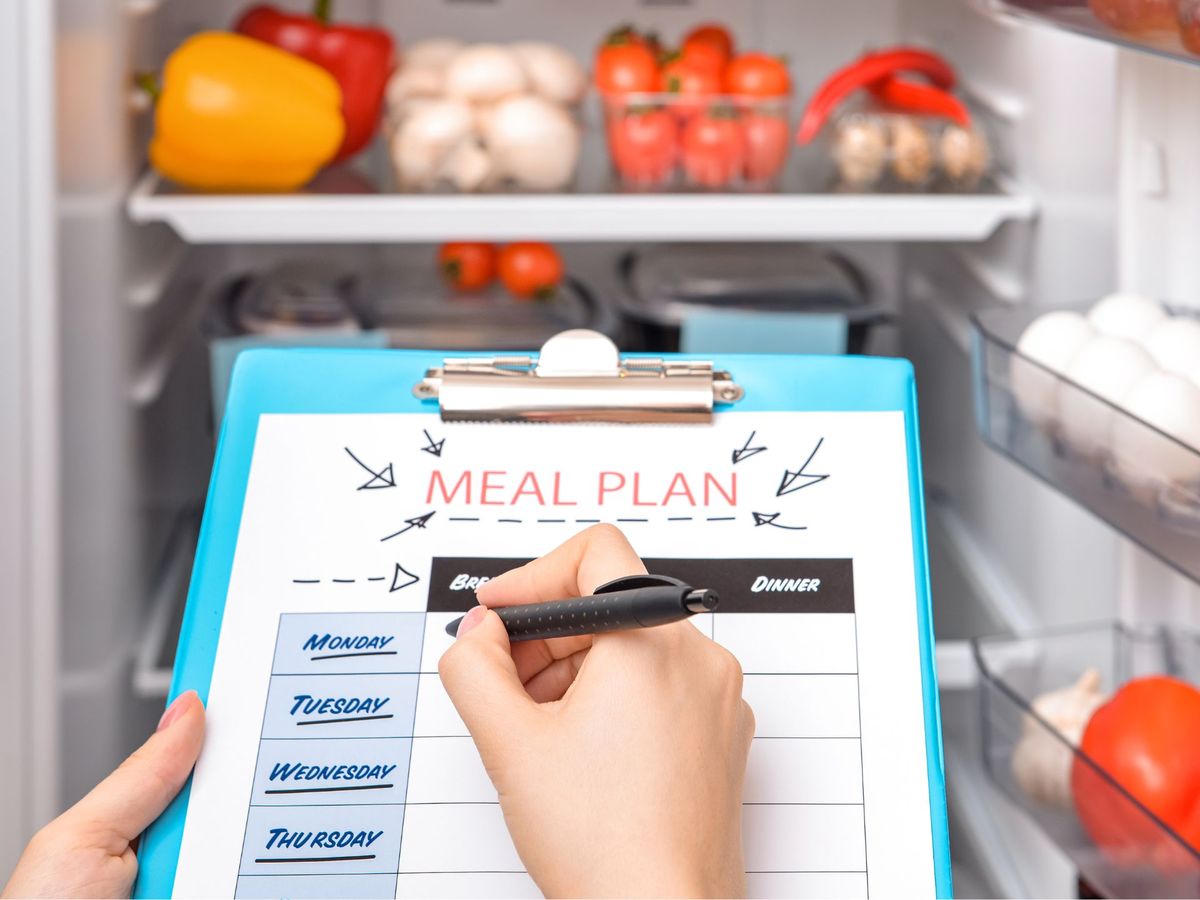Are you tired of feeling overwhelmed when it comes to losing weight? Do you find yourself constantly reaching for unhealthy snacks and processed foods because you don’t know what else to eat? The good news is that you don’t have to sacrifice taste or convenience to achieve your weight loss goals. By simply stocking your fridge with the right foods, you can set yourself up for success and make healthy eating a breeze. In this post, we’ll share the top foods to keep in your fridge for weight loss and provide tips for successful meal planning and preparation. Get ready to revamp your fridge and start seeing the results you’ve been dreaming of!
What Should I Put in my Fridge to Lose Weight?
Eating healthy doesn’t have to be boring or complicated. In fact, there are plenty of delicious and nutritious foods that can help you reach your weight loss goals. Here are some of the best foods to have in your fridge for weight loss.
1. Fruits and Vegetables
Fruits and vegetables are your best friends when it comes to weight loss. They are low in calories and high in fiber, vitamins, and minerals. They also contain antioxidants that can help protect your body from disease. Aim to eat at least five servings of fruits and vegetables per day. Some examples of fruits and vegetables that are good to keep in your fridge include:
- Leafy greens: Spinach, kale, lettuce, arugula, and collard greens are all packed with nutrients and are great for salads or smoothies.
- Berries: Strawberries, blueberries, raspberries, and blackberries are all low in calories and high in fiber and antioxidants.
- Apples and oranges: These fruits are easy to grab as a snack and are also high in fiber.
- Carrots and bell peppers: These vegetables are crunchy and satisfying, and can be eaten raw or cooked.
2. Lean Protein Sources
Protein is important for weight loss because it helps keep you feeling full and satisfied. It also helps build and repair muscle tissue, which can help boost your metabolism. Aim to eat at least 20-30 grams of protein per meal. Some examples of lean protein sources that are good to keep in your fridge include:
- Chicken breast: This is a great source of protein and is versatile enough to be used in a variety of recipes.
- Turkey: Turkey is low in fat and high in protein, making it a great choice for weight loss.
- Fish: Salmon, tuna, and cod are all rich in protein and omega-3 fatty acids, which can help reduce inflammation in the body.
- Tofu: Tofu is a plant-based protein source that is low in calories and high in protein. It’s also a great meat alternative for vegetarians and vegans.
- Low-fat dairy products: Milk, yogurt, and cheese can all be great sources of protein. Look for low-fat or non-fat options.
3. Whole Grains
Whole grains are important for weight loss because they are high in fiber, which can help keep you feeling full. They also contain vitamins and minerals that are essential for good health. Some examples of whole grains that are good to keep in your fridge include:
- Whole grain bread: Look for bread that is made with whole wheat, oats, or other whole grains. These types of bread are high in fiber and can help keep you feeling full.
- Quinoa: This is a complete protein source and is also high in fiber. It’s a great alternative to rice or pasta.
- Brown rice: Brown rice is a whole grain that is high in fiber and can be used in a variety of recipes.
- Whole grain pasta: Look for pasta that is made with whole wheat or other whole grains. These types of pasta are high in fiber and can be a great base for a healthy meal.
4. Low-Fat Dairy Products
Dairy products can be a great source of calcium and protein. However, they can also be high in fat and calories. Look for low-fat or non-fat options to keep your calorie intake in check. Some examples of low-fat dairy products that are good to keep in your fridge include:
- Greek yogurt: Greek yogurt is high in protein and low in fat. It can be used as a base for smoothies, mixed with fruit for a snack, or used as a sour cream substitute.
- Skim or low-fat milk: Skim or low-fat milk is a great source of calcium and protein. It can be used in smoothies, on top of cereal, or in recipes that call for milk.
- Cottage cheese: Cottage cheese is low in calories and high in protein. It can be eaten on its own, mixed with fruit, or used as a substitute for ricotta cheese in recipes.
- Reduced-fat cheese: Cheese can be high in fat and calories, but reduced-fat versions are available. Look for reduced-fat versions of your favorite cheese to use in recipes or as a snack.
5. Healthy Fats
Healthy fats are important for weight loss because they help keep you feeling full and satisfied. They also provide important nutrients that your body needs. Some examples of healthy fats that are good to keep in your fridge include:
- Avocado: Avocado is high in healthy monounsaturated fats and fiber. It can be used in salads, on toast, or as a substitute for mayonnaise in recipes.
- Nuts and seeds: Almonds, walnuts, chia seeds, and flax seeds are all high in healthy fats and can be used as a snack or added to recipes.
- Olive oil: Olive oil is high in healthy monounsaturated fats and can be used in salad dressings, as a cooking oil, or as a dip for bread.
6. Condiments and Seasonings
Condiments and seasonings can make healthy foods more exciting and flavorful. However, many condiments are high in fat, sugar, and calories. Look for low-fat or low-calorie options, or make your own condiments at home. Some examples of condiments and seasonings that are good to keep in your fridge include:
- Mustard: Mustard is low in calories and can be used as a substitute for mayonnaise or ketchup.
- Hot sauce: Hot sauce is low in calories and can add flavor to a variety of dishes.
- Herbs and spices: Herbs and spices can add flavor to meals without adding calories. Some examples include garlic, basil, rosemary, and cinnamon.
The Importance of Calorie Deficit for Weight Loss
While eating healthy foods is important for weight loss, it’s not the only factor to consider. In order to lose weight, you must be in a calorie deficit, which means that you’re burning more calories than you’re consuming. Here are some tips for creating a calorie deficit:
- Track your food intake: Keeping a food diary or using a calorie tracking app can help you understand how many calories you’re consuming each day.
- Monitor portion sizes: Be mindful of portion sizes, especially for calorie-dense foods like nuts, oils, and cheese.
- Increase physical activity: Exercise can help you burn more calories and create a larger calorie deficit. Aim to incorporate at least 30 minutes of moderate exercise into your daily routine.
- Choose low-calorie, high-volume foods: Foods that are high in fiber and water content, like fruits and vegetables, can help you feel full and satisfied without consuming too many calories.
- Be patient: Creating a calorie deficit takes time and consistency. Don’t expect to see results overnight, but stay committed to your healthy habits and trust the process.
Remember, no matter how healthy the foods in your fridge are, if you’re not in a calorie deficit, you won’t lose weight. By focusing on creating a calorie deficit through a combination of healthy eating and physical activity, you can achieve your weight loss goals and maintain a healthy lifestyle.
Foods to Avoid
While stocking your fridge with healthy foods is important for weight loss, it’s also important to avoid certain types of foods that can sabotage your efforts. Some examples of foods to avoid include:
- Highly processed foods: Processed foods are often high in calories, sugar, and unhealthy fats. These include items like packaged snacks, frozen meals, and fast food.
- Sugary drinks: Sugary drinks, like soda and fruit juice, can be high in calories and sugar. They can also contribute to cravings and overeating.
- Foods high in saturated fat: Foods that are high in saturated fat, like fried foods, fatty cuts of meat, and cheese, can be high in calories and unhealthy fats.
- Foods high in sodium: Foods that are high in sodium, like processed meats, canned soups, and fast food, can contribute to bloating and water retention.
While these foods may be tempting, it’s important to limit or avoid them altogether when trying to lose weight.
Tips for Successful Weight Loss
In addition to stocking your fridge with healthy foods and avoiding unhealthy options, there are some tips that can help you succeed in your weight loss journey:
- Practice portion control: It’s easy to overeat, even when eating healthy foods. Use measuring cups or a food scale to ensure that you’re eating the appropriate portion sizes for each food group.
- Plan your meals: Meal planning can help you stay on track with your weight loss goals. Set aside time each week to plan out your meals and snacks, and make sure to stock up on the necessary ingredients.
- Incorporate physical activity into your routine: Regular exercise is important for weight loss and overall health. Aim for at least 30 minutes of moderate-intensity exercise most days of the week.
- Stay hydrated: Drinking plenty of water can help you feel full and prevent overeating. Aim for at least 8-10 cups of water per day.
- Get enough sleep: Lack of sleep can contribute to weight gain and overeating. Aim for at least 7-8 hours of sleep per night.
By incorporating these tips into your daily routine, you can set yourself up for success in your weight loss journey. Remember to be patient and consistent, as weight loss is a gradual process that requires dedication and commitment.
Meal Prepping for Weight Loss
Meal prepping can be a helpful tool for weight loss, as it allows you to plan and prepare healthy meals in advance. Here are some tips for meal prepping:
- Plan your meals: Before you start prepping, plan out your meals for the week. Choose healthy, balanced meals that include a variety of fruits, vegetables, lean proteins, and healthy fats.
- Make a grocery list: Once you’ve planned your meals, make a grocery list and stick to it. This will help you avoid impulse purchases and ensure that you have everything you need for meal prep.
- Prep ingredients in advance: Cut up vegetables, cook grains, and portion out proteins in advance to save time during the week.
- Use portion control containers: Portion control containers can be helpful for ensuring that you’re eating the appropriate serving sizes for each food group.
- Store meals in the fridge or freezer: Once your meals are prepped, store them in the fridge or freezer for easy access throughout the week.
- Mix it up: Don’t be afraid to experiment with different recipes and ingredients to keep things interesting.
By incorporating meal prepping into your routine, you can set yourself up for success in your weight loss journey. It can also save you time and money in the long run, and help you avoid unhealthy food choices when you’re short on time.
Conclusion
Stocking up your fridge with these healthy foods can help you reach your weight loss goals while still enjoying delicious and nutritious meals. Remember to aim for a balanced diet that includes plenty of fruits and vegetables, lean protein sources, whole grains, healthy fats, and low-fat dairy products. Don’t be afraid to experiment with different recipes and flavors to keep your meals interesting and satisfying. By making healthy choices and staying consistent, you can achieve the body and health that you desire.
FAQ
Can I still eat carbs if I want to lose weight?
Absolutely! Carbohydrates are an important macronutrient that provide energy for the body. Focus on choosing complex carbs, like whole grains, fruits, and vegetables, which are high in fiber and will keep you feeling full.
Is it okay to snack while trying to lose weight?
Yes, snacking can be a helpful way to prevent overeating and maintain energy levels throughout the day. Choose healthy snacks like fruits, vegetables, or nuts, and be mindful of portion sizes.
Can I still eat out while trying to lose weight?
Yes, you can still enjoy dining out while trying to lose weight. Look for healthy options on the menu, like grilled proteins and salads, and be mindful of portion sizes.
Do I need to completely avoid fats in my diet?
No, fat is an essential nutrient that the body needs for various functions. Choose healthy sources of fat, like avocado, nuts, and olive oil, and be mindful of portion sizes.
How much should I be eating to lose weight?
The amount of food you need to eat to lose weight depends on your individual needs and goals. It’s important to listen to your body’s hunger and fullness cues, and aim to eat a balanced diet that includes a variety of fruits, vegetables, lean proteins, and healthy fats.
Can I still have treats while trying to lose weight?
Yes, you can still enjoy treats in moderation while trying to lose weight. Allow yourself the occasional indulgence, but be mindful of portion sizes, daily calorie intake, and frequency. Consider healthier alternatives to your favorite treats, like homemade frozen yogurt or baked sweet potato fries.
Better Living uses affiliate links. If you make a purchase through them, we may receive a small commission (for which we are deeply grateful) at no cost to you.





